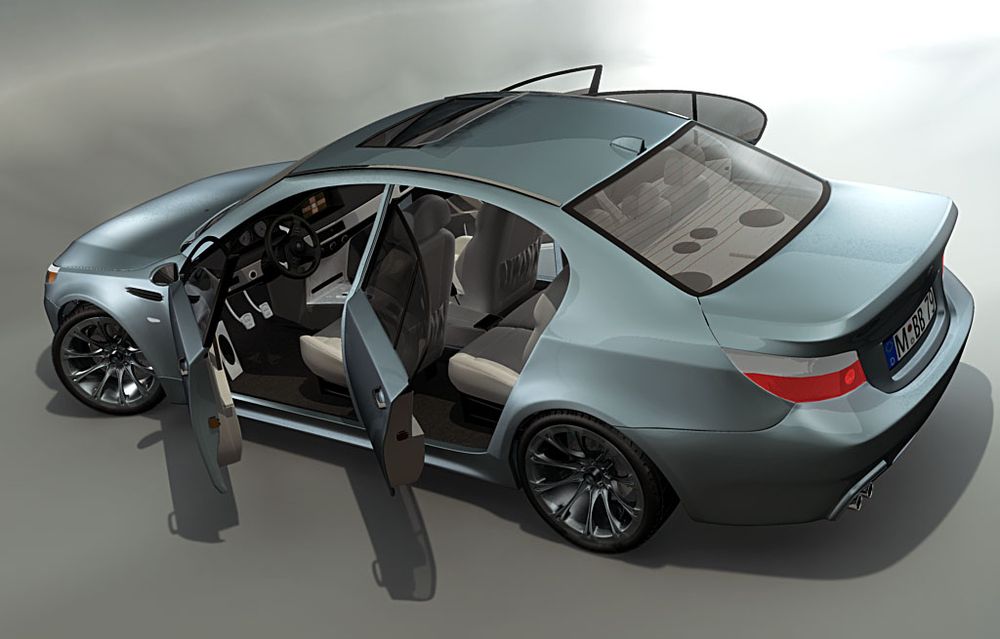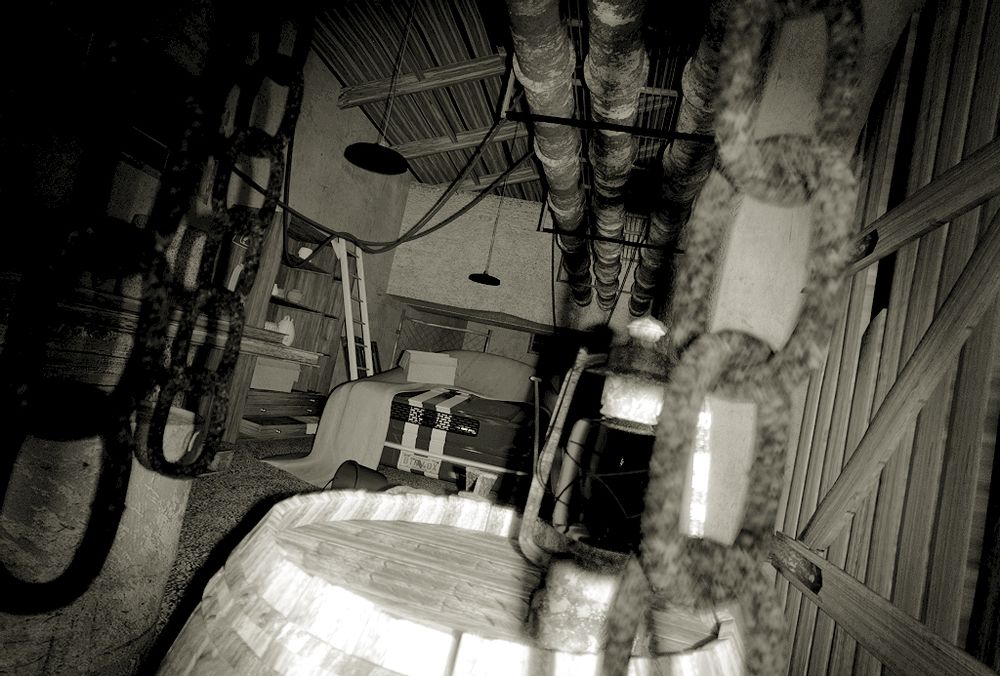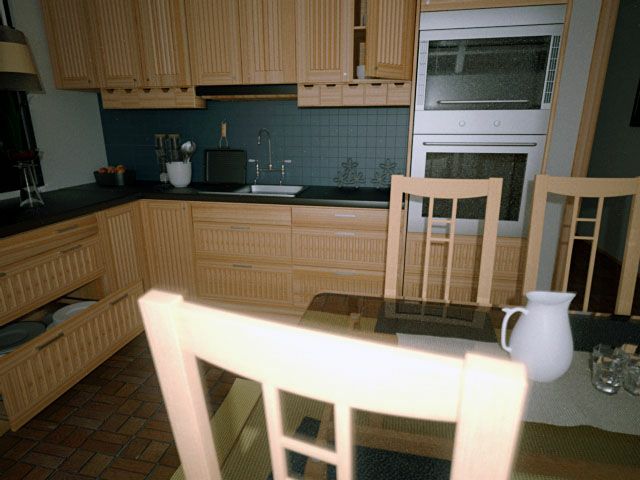
| 3DVF : Do you used a photo in order to have a goal for realism ? |
Of course, it is always important to gather as many reference pictures as possible to be stay true to the real thing as close as possible. You can only be as good as your reference images. In the case of interior renders you can find hundreds of suiting images on the web but I have a couple of suiting magazines here as well.
| 3DVF : Your lightning is really realistic; have you some comments about Maxwell Render ? |
Thanks you very much. Maxwell Render- which has most recently reached the first beta level- is already able to deliver images of yet unsen quality if used correctly.. It is the first unbiased render engine mimicing the natural behaviour of light and materials as realistic like it hasn’t been done before. It handles the most complex light/surface interactions with ease and is very easy to set up too.
The ease of setup is a sideeffect of its unbiased structure. While biased renderengines have to created a solution based on the various parameters you have to edit before rendering Maxwell instead always creates the correct solution for you. That brings realism in terms of image quality but on the other hand it might also limit you in your artistic expression.
The Next limit team is consistently updating Maxwells Core and the step from Alpha into beta stage brought some very nice additions and a huge speed improvement, however it still is quite limitating in some areas (especially texturing) which is supposed to be adressed in one of the following releases. They plan to integrate an own system for procedural textures for example which is currently not supported.
Well, I would not call Maxwell generally “production ready” mostly because of its still too long render times and limitations in terms of versatility. But it is very hard to beat in fields like architectural and product visulisation, where its strenghts become cleary visible.

| 3DVF : Would you have some councils to give to Cg users who wanted increase their lightning knowledge? |
Besides training your technical skills and how to get the most out of your 3D package it is most important to observe nature as much as possible. It is simply a must to just go out and watch how light and shadows behave or to see how surfaces react under changing light conditions. A fair amount of theoretical knowledge about physics might not hurt as well though.
There are many nice books out there training how to use light to achieve certain effects ranging from simple 3 point lighting to complex dramatic light setups.

To be a little Mental ray specific here I can strogly suggest you to read “Rendering with Mental Ray” written by Thomas Driemeyer. This book is not about lighting in general but explains you how to work efficiently with mental ray since it is not the easiest software to use.
| 3DVF : How did you create this sensation of night flash photo ? |
I have to give credits to my buddy eldo here, he came up with that idea first and I developed it into the current state and applied it to the various scenes you can see here.
But actually there really isn’t much to it, there isn’t much needed to achieve this effect.
I used Maxwell render of course for this effect and I can hardly think of any other render engine being capable of delivering such a result with that level of realism.

| 3DVF : What is the most complex thing in this case ? Why ? |
As I stated earlier it is not a very complex thing to do, you just have to stick to the rules of nature as always when working in Maxwell. You have to model everything in real world scale and the rest is up to a decent camera and light setup. In this case it was crucial to use a long exposure time (Maxwell emulates a real camera with f-stop, exposure time, film material etc) since the only light source is a small plane emitting light into the room. This is again Maxwell specific, there are no light sources by traditionall means but only energy emitting surfaces. All inverse square light falloffs or Kelvin color temperatures to name another aspect are integrated in that shader.
The flashlight was build from a 2*2 cm wide plane emitting an energy amount of 200W directionally into the room. The larger the plane the softer the shadows would appear, here you can think of the rules for a real area light .
It took only a small amount of refining in photoshop to achieve the final look of the image.


